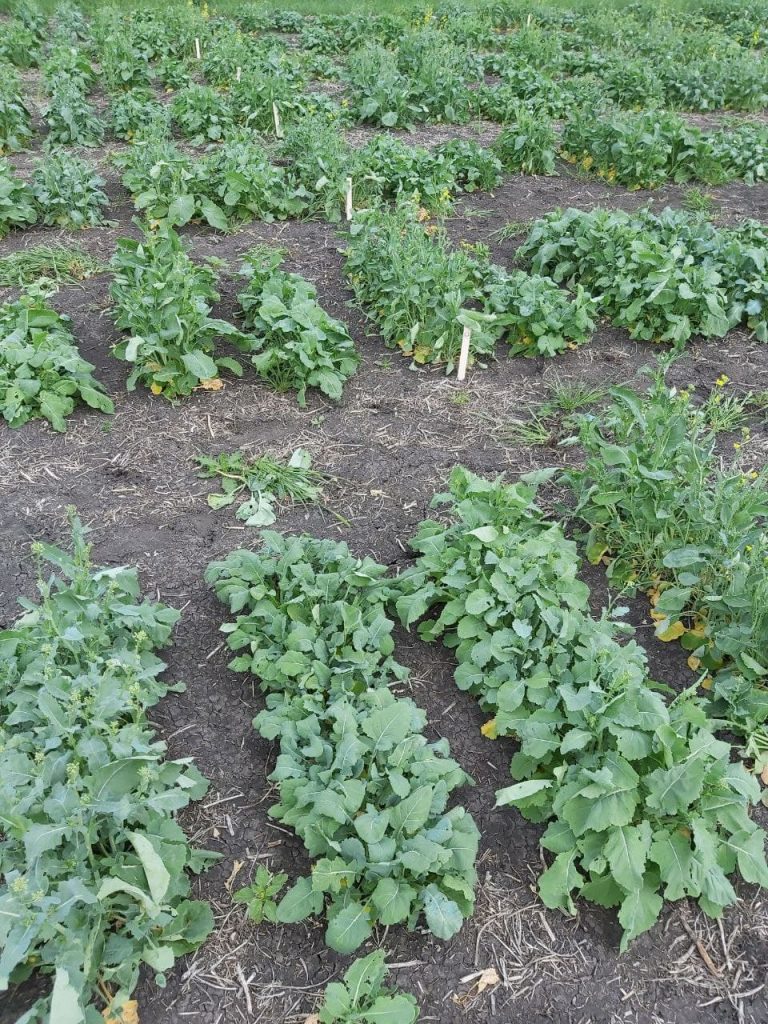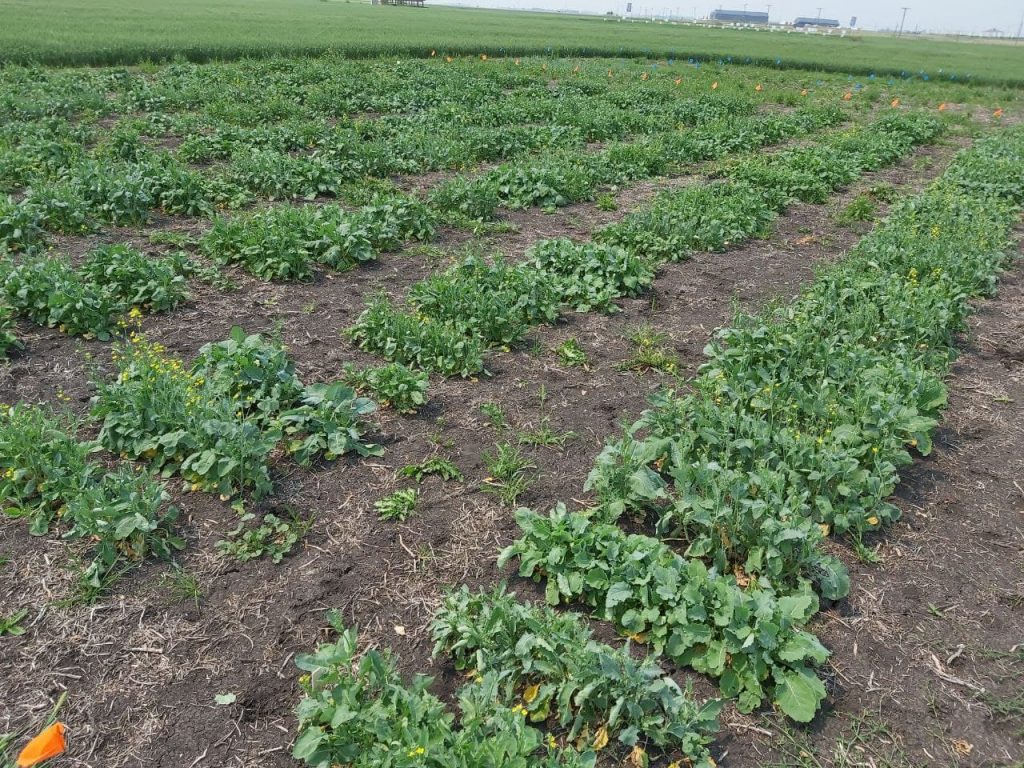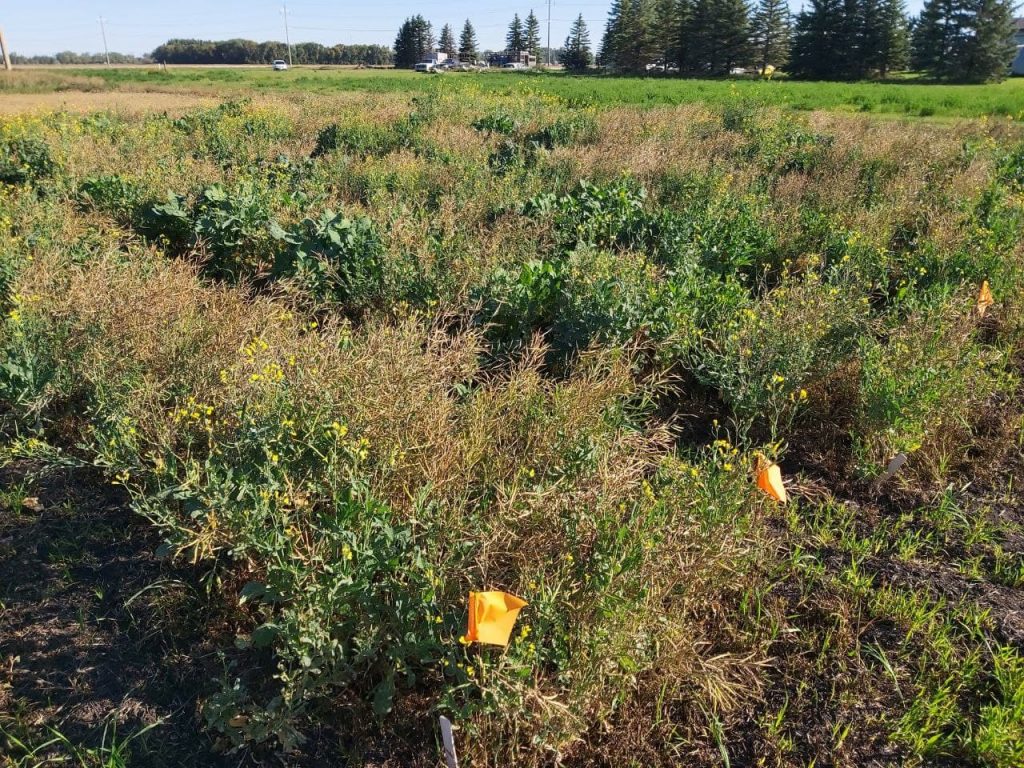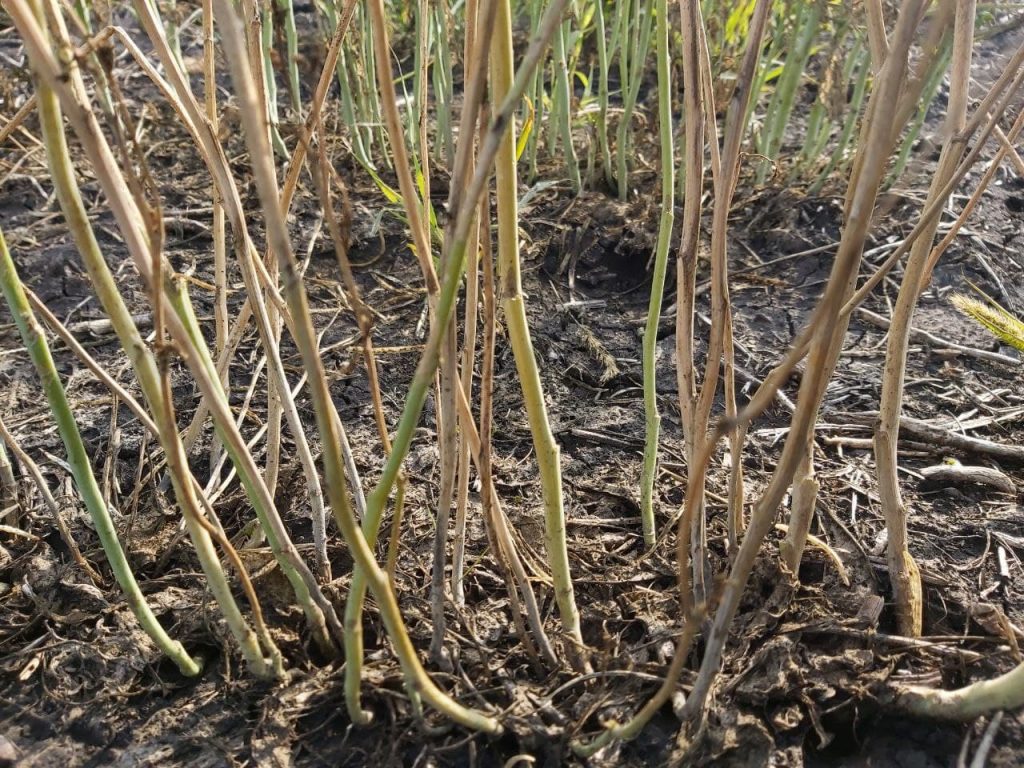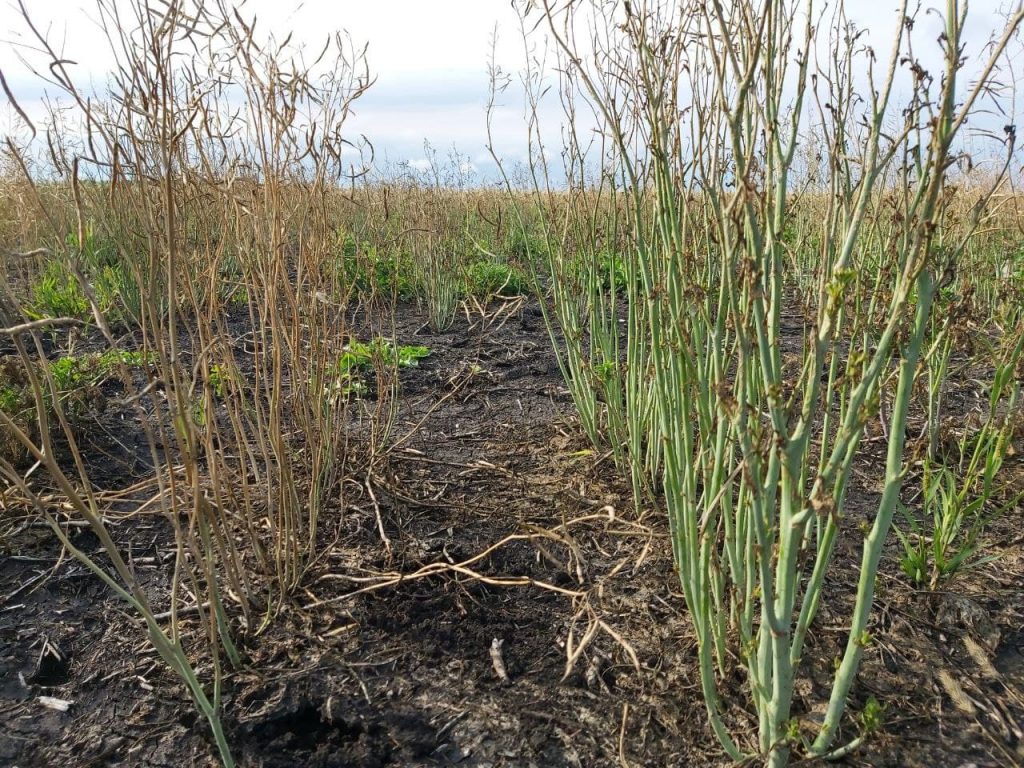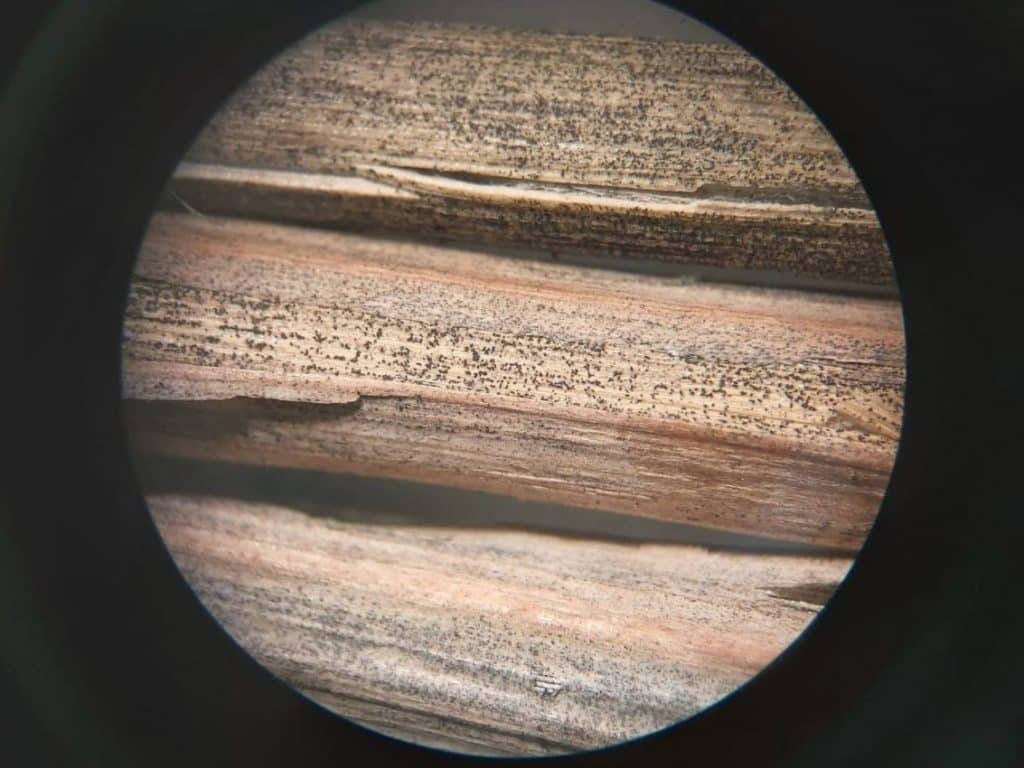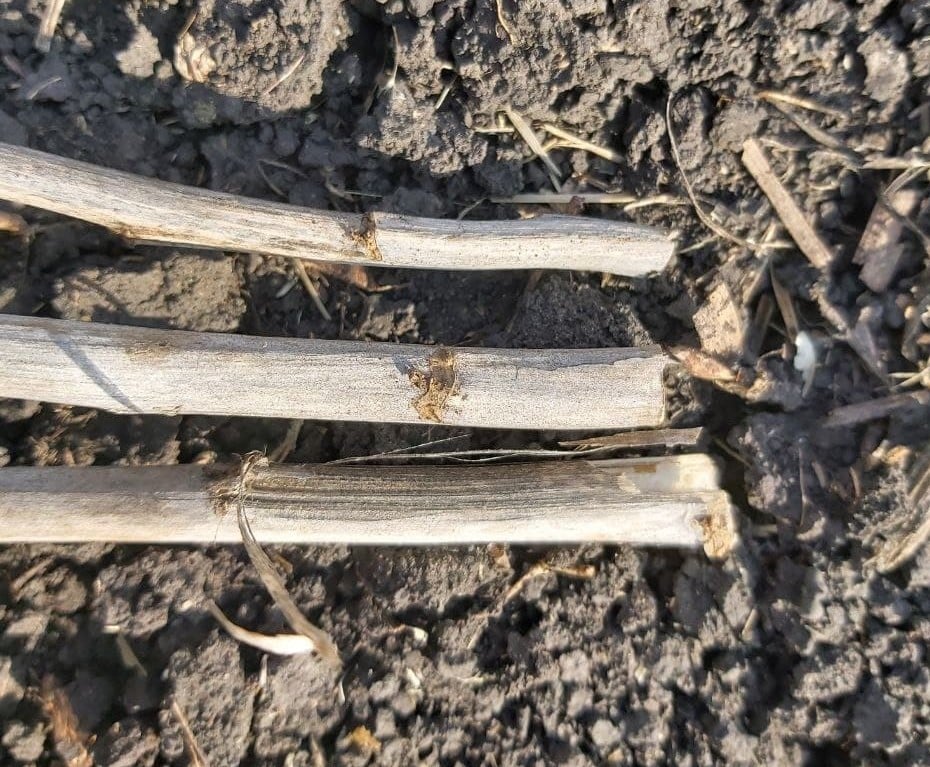Key Result
The research team reported a significant interaction between V. longisporum and L. maculans on blackleg disease severity scores, but not verticillium stripe scores. They also reported that both pathogens individually reduced seed yield, but found no significant additive effect on decreased seed yield.
Project Summary
Verticillium stripe, caused by the fungus Verticillium longisporum, was first found in canola in Canada in 2014. A subsequent survey in 2015 revealed that this disease is present in all provinces from Quebec to British Columbia, but most frequently found in Manitoba. There is much that is not known about this disease in Canada. But it has been present and studied for many years in Europe, where it has been shown to cause significant yield loss in both spring and winter types of Brassica napus.
This project is part of an integrated and collaborative approach to addressing the major research priorities around the new disease, verticillium stripe, in Canada. Fundamental to the success of this project, is the establishment of a Verticillium nursery at the first report farm for the pathogen on canola in North America. The nursery will be sited on a four-hectare area known to have the highest soil density of the pathogen at the farm. The nursery will provide support for activities including soil and plant materials for method development, longevity of the pathogen, screening of canola lines, disease development and yield effects, and outreach to growers and industry.
Objectives
The specific project objectives are:
- Further development of tools for rapid identification of the pathogen in soil.
- Understand the longevity of the pathogen and micro-sclerotia in soil.
- Establish the endophytic nature of the pathogen in soil.
- Measure the diversity of V. longisporum and its lineage.
- Determine and quantify the relationship and interaction between V. longisporum and L. maculans.
- Develop and utilize a Verticillium nursery to provide source materials.
- Understand the yield risk of Verticillium longisporum.
- Foster awareness of the disease for its diagnosis, risks and control.
Results
Researchers identified three different V. longisporum lineages in Saskatchewan, and lineage A1/D1 is considered the most virulent. Researchers found a significant interaction between V. longisporum and L. maculans on blackleg scores, but not verticillium stripe scores. When researchers looked at seed yield, the main effect of both pathogens individually reduced seed yield, but they noted no significant interaction between V. longisporum and L. maculans – so there was not a significant additive effect on decreased seed yield.
Infected stubble was bagged and buried under the soil at depths of 5, 10, 15 and 20 cm in 2020 and were sampled after 24 months and 36 months post burial. The results from the 24 month post burial samples showed that all the microsclerotia were alive and able to germinate.
